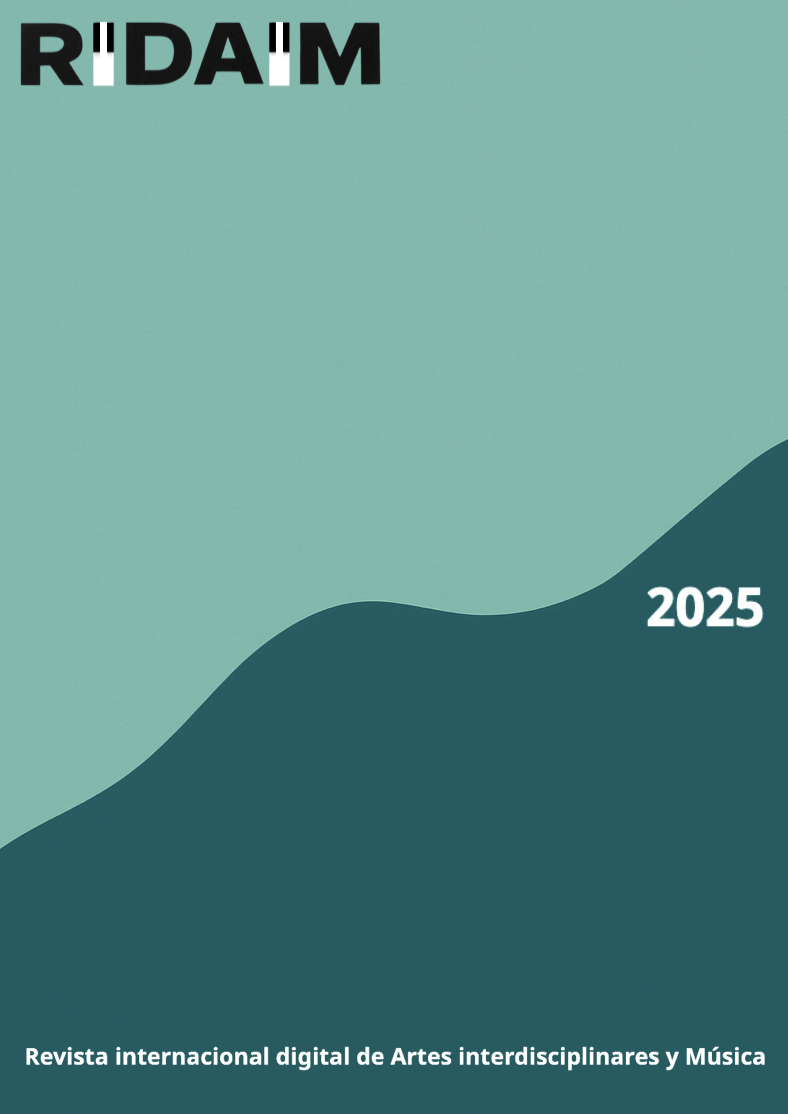Sound canvases:
Franz Liszt am Flügel phantasierend (Danhauser, 1840)
Keywords:
art, music, painting, Beethoven, LisztAbstract
Art reveals itself as a supreme enigma through the intersection of different artistic branches—in this case, music and painting—in a broad context of cultural history. Only through detective work, channeled through an interdisciplinary methodology, can we understand the most hidden secrets of its creators. Using Josef Danhauser’s 1840 painting, Franz Liszt am Flügel phantasierend or Liszt au piano, as an example, various artistic confluences are revealed, from a sort of suite of artists around the music of Beethoven, to two notable absences, and even an advertising dimension.
Downloads
References
Adorno, T. W. (1971). Teoría estética. Taurus.
Buch, E. (2001). La novena de Beethoven. Historia política del himno europeo. Acantilado.
Correspondance de Frédéric Chopin, II, (1981), Bronislas Edouard Sydow (ed.). Hermann.
Correspondance de Frédéric Chopin, III, (1981), Bronislas Edouard Sydow (ed.). Hermann.
Cortot, A. (1994). Aspectos de Chopin. Alianza.
Dalhaus, C. (1999). La música absoluta. Idea Books.
Downs, Philip. (1998). La música clásica: la era de Haydn, Mozart y Beethoven. Akal.
Delacroix, E. (1893). Journal. Plon-Nourrit et Cie.
Delacroix, E. (2001). Diccionario de Bellas Artes. Síntesis.
Dömling, W. (1998). Franz Liszt y su tiempo. Alianza.
Eigeldinger, J. J. (2006). Chopin vu par ses élèves. Fayard.
Einstein, A. (2004). La música en la época romántica. Alianza.
Figes, O. (2020). Los europeos. Taurus.
Gavoty, B. (1986). Chopin. Javier Vergara.
Gombrich, E. (1983). Imágenes simbólicas. Alianza.
Gómez Redondo, F. (1994). El lenguaje literario. Edaf.
Grove, G. (1962). Beethoven and his Nine Symphonies. Dover.
Kovács, I. (2014). “The Apotheosis of Beethoven in Danhauser’s Painting Liszt at the Piano”. Studia Musicologica, 55 (1-2). pp. 119-130.
Lavagne, A. (1976). Chopin. Espasa Calpe.
Lenz, W. v. (1852). Beethoven et ses trois styles. Bernard.
Lockwood, L. (2015). Beethoven’s Symphonies: An Artistic Vision. W.W. Norton.
Massin, J. y B. (2011). Beethoven. Turner.
Monsaingeon, B. (2019). Mademoiselle. Conversaciones con Nadia Boulanger. Acantilado.
Orga, A. (2001). Beethoven, Robinbook.
Rosen, C. (2005). Las sonatas para piano de Beethoven. Alianza.
Rosen, C. (1998). The romantic generation. Harvard University Press.
Rosen, C. (1987). Formas de sonata. Labor.
Rosen, C. (1986). El estilo clásico, Haydn, Mozart y Beethoven. Alianza.
Sand, G. (1873). Impressions et souvenirs. Michel Levy frères.
Sydow, B., Colfs-Chainaye, D. y Chainaye, S. (1975). Lettres de Chopin et de George Sand (1836-1839). Editions La Cartoixa.
Simpson, R. (2004). Las sinfonías de Beethoven. Idea Books.
Solomon, M. (1977). Beethoven. Javier Vergara.
Storr, A. (2002). La música y la mente. Paidós.
Stravinski, I. (2006). Poética musical. Acantilado.
Swafford, J. (2017). Beethoven: tormento y triunfo. Acantilado.
Swarowsky, H. (1989). Defensa de la obra. Real Musical.
Vela, M. (2022). “Enigmas de la Décima Sinfonía de Beethoven”. Cuadernos De Ilustración Y Romanticismo, (28), pp. 455–474. https://doi.org/10.25267/Cuad_Ilus_romant.2022.i28.21
Vela, M. (2020). Las nueve sinfonías de Beethoven. Fórcola.
Vela, M. (2019). Correspondencias entre música y palabra. Academia del Hispanismo.
Downloads
Published
Issue
Section
License
Copyright (c) 2025 Marta Vela

This work is licensed under a Creative Commons Attribution-NonCommercial-NoDerivatives 4.0 International License.
RIDAIM utiliza un sistema de licencia CC Reconocimiento-NoComercial-SinObrasDerivadas 4.0






